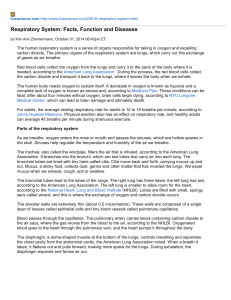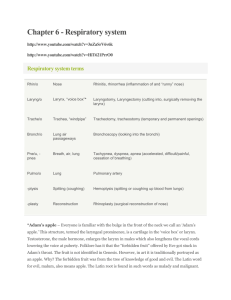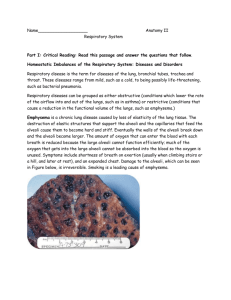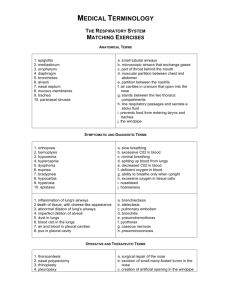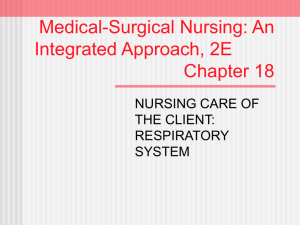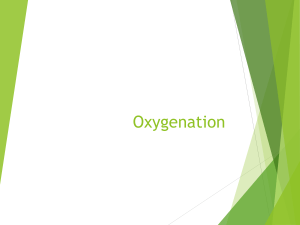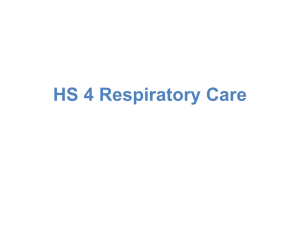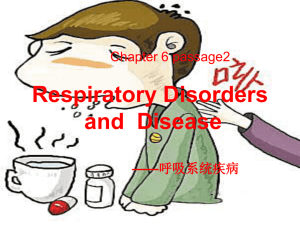Three main types of lung disease - PowerPoint
advertisement
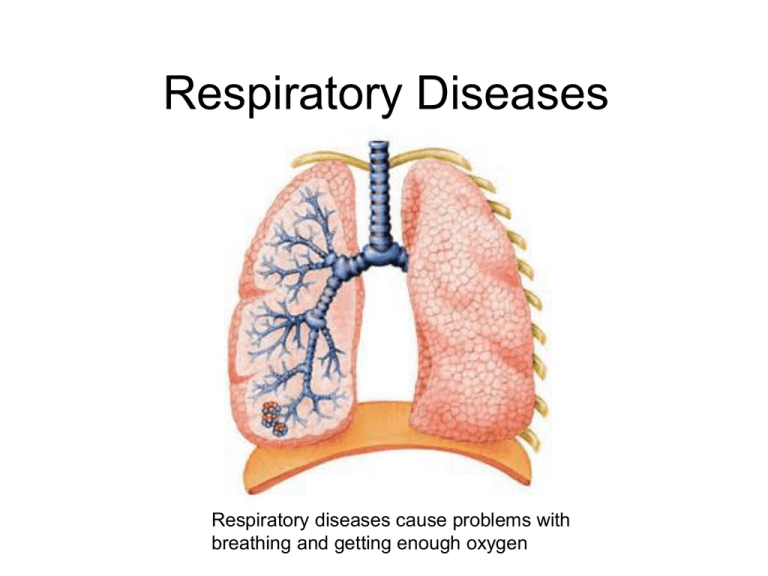
Respiratory Diseases Respiratory diseases cause problems with breathing and getting enough oxygen Types of Respiratory Diseases • There are 3 main types of respiratory diseases: – Airway diseases – Lung tissue diseases – Pulmonary circulation diseases Airway diseases • • • These diseases affect the tubes (airways) that carry oxygen and other gases into and out of the lungs These diseases cause a narrowing or blockage of the airways They include asthma and bronchitis. People with airway diseases sometimes describe the feeling as “trying to breathe out through a straw.” Small air tubes (bronchi) Lung tissue diseases • • • These diseases affect the structure of the lung tissue. Scarring or inflammation of the tissue makes the lungs unable to expand fully It also makes the lungs less capable of taking up oxygen and releasing carbon dioxide. People sometimes describe the feeling as "wearing a tootight sweater or vest" that won't allow them to take a deep breath Lung tissue (alveoli) Pulmonary circulation diseases • • • • These diseases affect the blood vessels in the lungs They are caused by clotting, scarring, or inflammation of the blood vessels They affect the ability of the lungs to take up oxygen and to release carbon dioxide These diseases may also affect heart function Blood vessels Asthma • When an asthma attack occurs, the muscles surrounding the airways become tight and the lining of the air passages swell. This reduces the amount of air that can pass through • Most people with asthma have wheezing attacks separated by symptomfree periods • In sensitive individuals, asthma symptoms can be triggered by inhaling certain substances Bronchitis • Bronchitis is a swelling of the inside layer of bronchi • There are two types of bronchitis: acute, which is temporary, and chronic, which is long-lasting • Viruses cause about 90% of acute bronchitis cases, whereas bacteria account for about 10%. • Chronic bronchitis is characterized by the presence of a productive cough that lasts for three months or more per year for at least two years. Cigarette smoking and air pollution are the most common causes Chronic obstructive pulmonary disease (COPD) • COPD is poor airflow in the bronchi caused by the breakdown of lung tissue (emphysema) • Symptoms include difficulty breathing and coughing • It is most commonly caused by tobacco smoke or air pollution • It usually worsens over time, and is rarely reversible Tobacco smoke • Tobacco smoke contains about 1000 chemicals, many of them being harmful • It contains nicotine which is addictive • When something is addictive, people feel like they need it just to feel okay or normal, so it’s very hard to stop • Smoking makes tar, a black sticky substance, form in the lungs • Tar contains about 60 chemicals that are known to cause cancer (carcinogens) Lung cancer • Lung cancer is a lung tissue disease • Lung cancer causes about 1.4 million deaths every year • It is one of the leading causes of death in the world • 80-90% of lung cancer is caused by smoking

